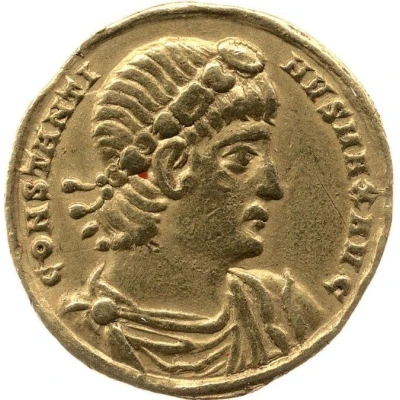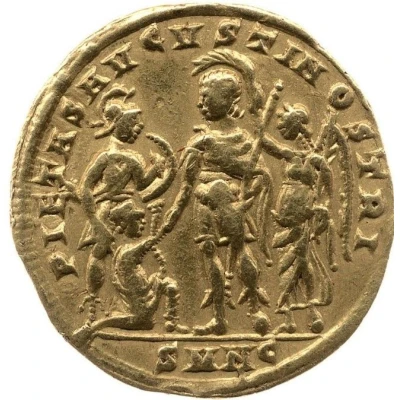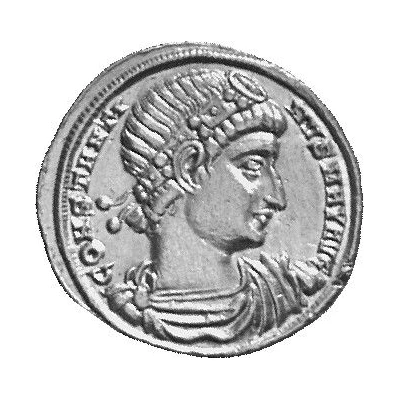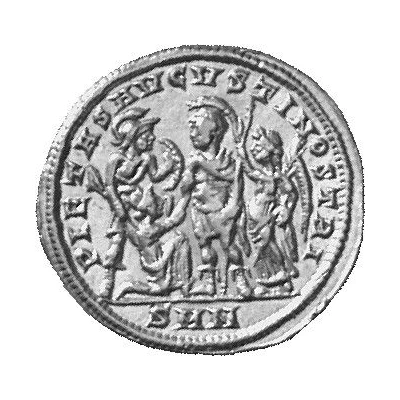


© British Museum
Solidus - Constantinus I PIETAS AVGVSTI NOSTRI; Nicomedia
330 year| Gold | 4.47 g | 20 mm |
| Issuer | Rome › Roman Empire (27 BC - 395 AD) |
|---|---|
| Emperor | Constantine I (Flavius Valerius Constantinus) (306-337) |
| Type | Standard circulation coin |
| Year | 330 |
| Value | Solidus (1) |
| Currency | Solidus, Reform of Constantine (AD 310/324 – 395) |
| Composition | Gold |
| Weight | 4.47 g |
| Diameter | 20 mm |
| Shape | Round (irregular) |
| Technique | Hammered |
| Orientation | Variable alignment ↺ |
| Demonetized | Yes |
| Updated | 2024-10-04 |
| Numista | N#389568 |
|---|---|
| Rarity index | 100% |
Reverse
Constantine, in military dress with cloak over left shoulder, standing left, holding sceptre, sloped to right, in right hand and receiving, with left hand, kneeling female figure, turreted, on ground left, facing right, presented be soldier, helmeted, carrying shield in left hand, facing right: on right, Victory, winged, draped, facing left, holding palm, upright at left shoulder in left hand, and crowning Constantine with right hand raised.
Script: Latin
Lettering: PIETAS AVGVSTI NOSTRI
Translation: The piety of our emperor
Interesting fact
One interesting fact about the Solidus - Constantinus I (PIETAS AVGVSTI NOSTRI; Nicomedia) (330) coin is that it features an image of the Roman Emperor Constantine I, also known as Constantine the Great, on one side, and the goddess Pietas on the other. This coin was minted during Constantine's reign, which lasted from 306 to 337 AD, and it was used as a standard circulation coin throughout the Roman Empire. The image of Constantine on the coin was meant to symbolize his leadership and authority, while the image of Pietas was meant to represent the Roman Empire's commitment to the values of piety and devotion. The coin's gold content and intricate design also made it a valuable and highly sought-after form of currency during its time.

